
The Imposters

I’m about to say something controversial. This is your warning. Here it comes… I hate plant identification apps! Wow, that felt good to get off my chest. I know, I know, there are people that absolutely love them, but I’m just not one of those people. Maybe it started with the kids in elementary school that used to tell me (and prove it too) that I was gullible, and maybe that desire to not be fooled has made me jaded - I don’t know. What I do know is that some plants look way too similar to another to be identified by an app through a picture or two. When I go to work to try to identify a plant, I take a lot of things into consideration, like when a plant is in flower, if it has a fragrance, the texture of the leaf, and so on. Unfortunately, the apps can’t do that (yet…!).
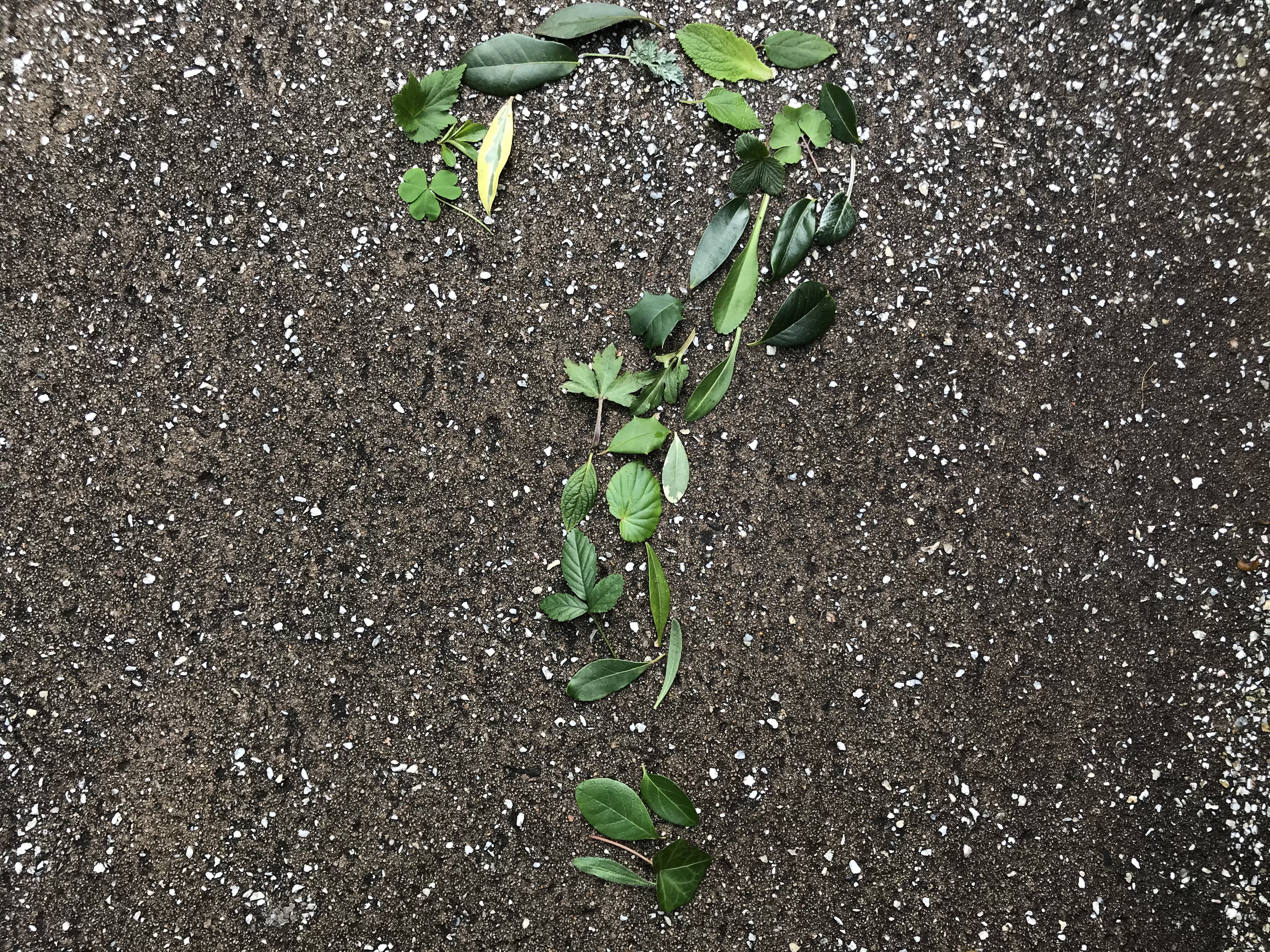
I’m not saying you need to delete your plant ID apps, but please take them with a grain of salt. My experience with them has not yielded a lot of correct results, but I can understand why. As someone whose career is plants, even I have a hard time identifying them sometimes! A big part of the reason for the confusion is what I like to call “plant imposters”. You know me, I have a flair for the dramatic, but these plant look-alikes can certainly give you a run for your money! Let’s take a look at a few common ones at Brookgreen Gardens.
Ajania (Ajania pacifica)/Garden Mum (Chrysanthemum species)
Garden mums are a familiar sight, both in gardens and in floral arrangements. They are a cheerful flower that is easy to default to when you think of a quintessential bloom. But did you know the leaves of mums are very similar to other plants? One in particular is ajania. If you are looking at the two side by side before they have flowers, it may be hard to tell which is which!
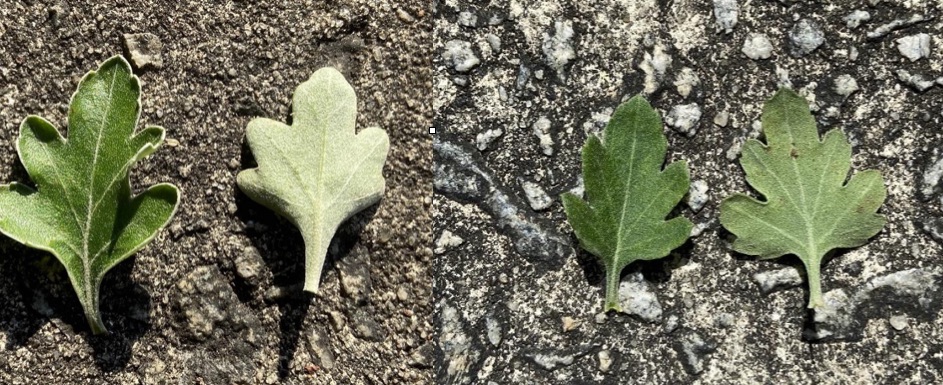
The image above shows an ajania leaf on the left, and a mum leaf on the right. Sure, there may be subtle difference between the two, but at first (and maybe second and third!) glance, it’s easy to mix them up. Fortunately for us, the flowers between the two are fairly different.
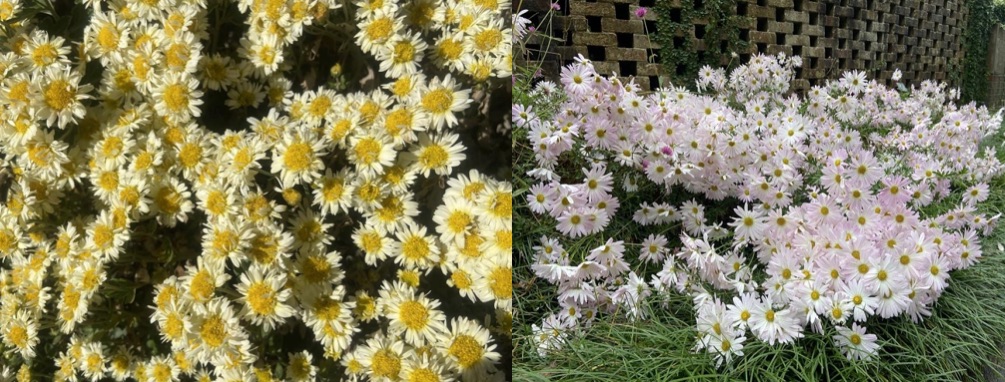
As you can see above, ajania has small, rather cramped flowers. While the mum (specifically Chrysanthemum x morifolium ‘Ryan’s Pink’), to the right, has larger flowers spaced more widely about the stem. Also, the color is different. However, with mums, don’t rely on the color to differentiate them - they come in so many different hues that you will find ones in the same color family!
Windflower (Anemone x hybrida)/Iceland Poppy (Papaver nudicaule)
Some of these plants could just make your head spin! Our next look-alikes are windflowers and Iceland poppies. The flowers on these two are very similar. To make things even more hectic, I even put two white flowering cultivars, just to show how messy things can get!
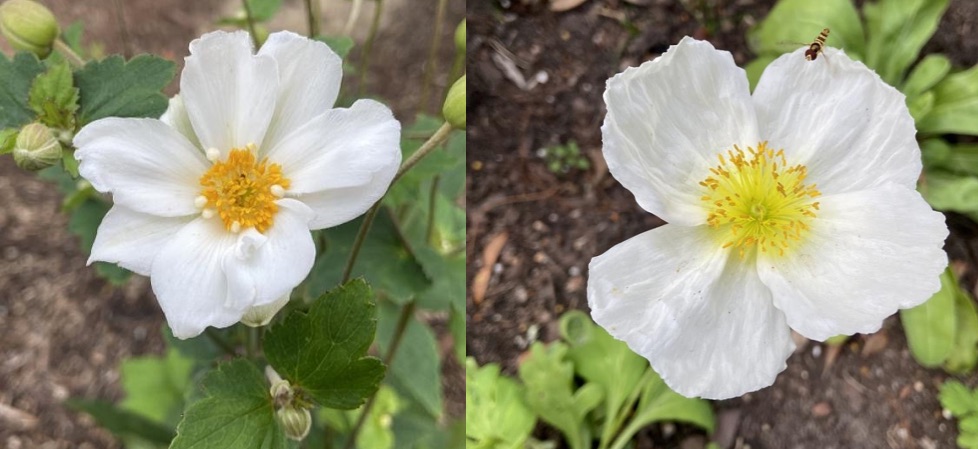
Anemone × hybrida 'Honorine Jobert’, pictured to the left, and Papaver nudicaule (Spring Fever® White) can be quite hard to tell apart!
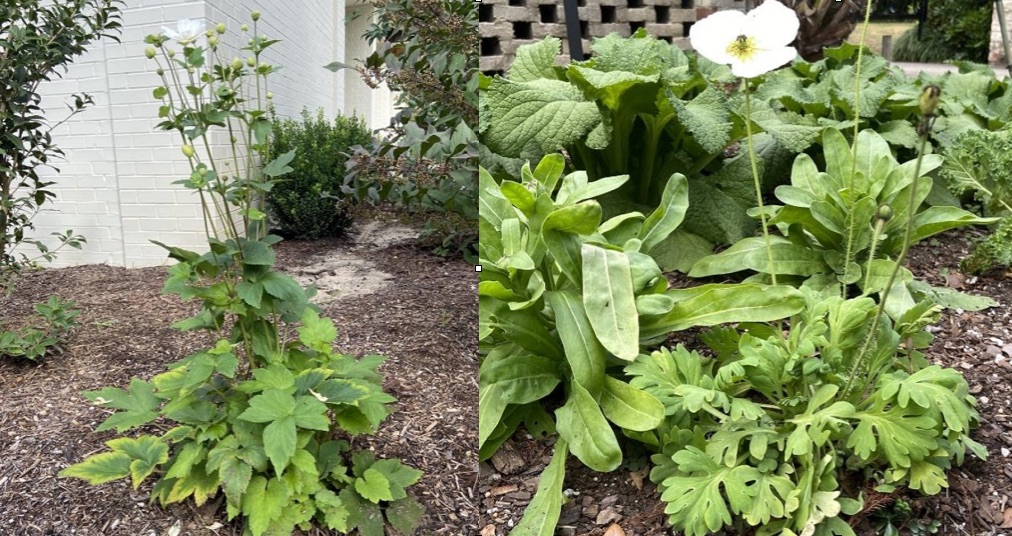
To determine our differences, we can look at the habit, or the overall form of the plant. In doing so, we can see how the windflower is in fact a bit taller and has a different leaf shape from that of the poppy, pictured on the right. The poppy is smaller overall and the leaf is finer in appearance, thanks to its many dissected points.
Bigleaf Hydrangea (Hydrangea macrophylla)/Chinese quinine (Dichroa febrifuga)
It is definitely understandable to confuse these two plants! Bigleaf hydrangeas are a staple here in southern gardens, and for good reason. Shrubs that boast beautiful flowers and think relatively nothing of our hot and humid summers are a gift! However, its look-alike, Chinese quinine is easy to confuse. In fact, another common name for this plant is evergreen hydrangea.
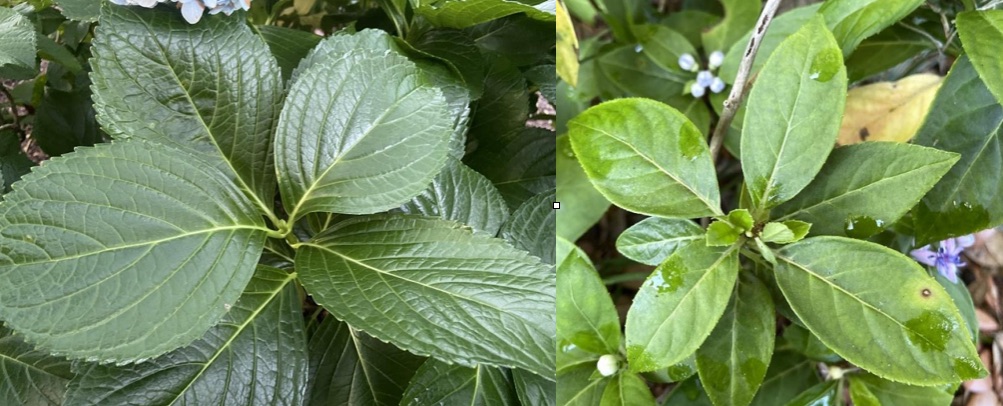
Side by side, it’s easy to see a bit of a resemblance! The hydrangea, on the left, has large, green, distinctly serrated leaves. Fortunately for us, the leaves of the Chinese quinine, on the right, are a bit different, being more narrow and with finer serrations on the leaf margin.
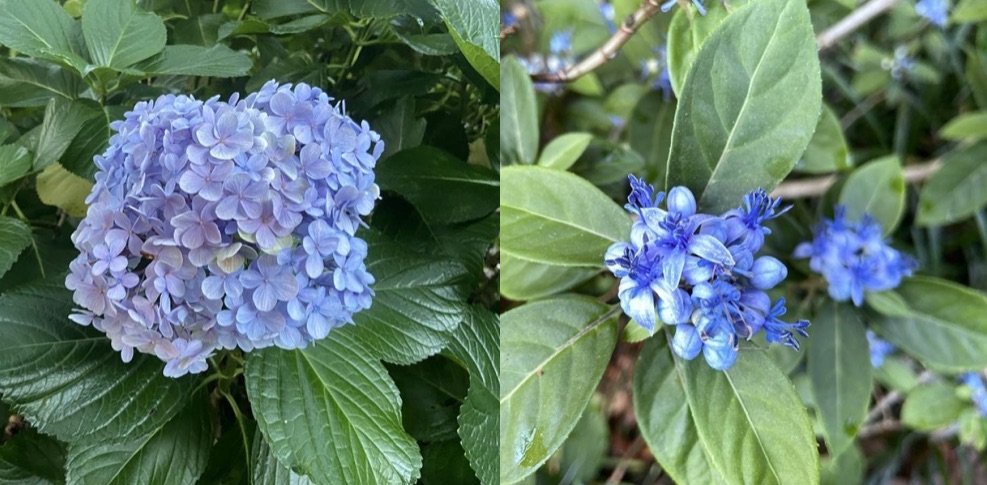
If the leaf difference isn’t overly clear, at least the difference in flowers is fairly noticeable. On the left, we see the large, almost boquet-within-themselves flowers of the bigleaf hydrangea, while the flowers on the Chinese quinine on the right are smaller, and a bit more subdued.
Mexican Hat Plant (Ratibida columnifera)/Large Coneflower (Rudbeckia maxima)
Let’s take a look at another flower look-alike. This time, we have Mexican hat plant and large coneflower.
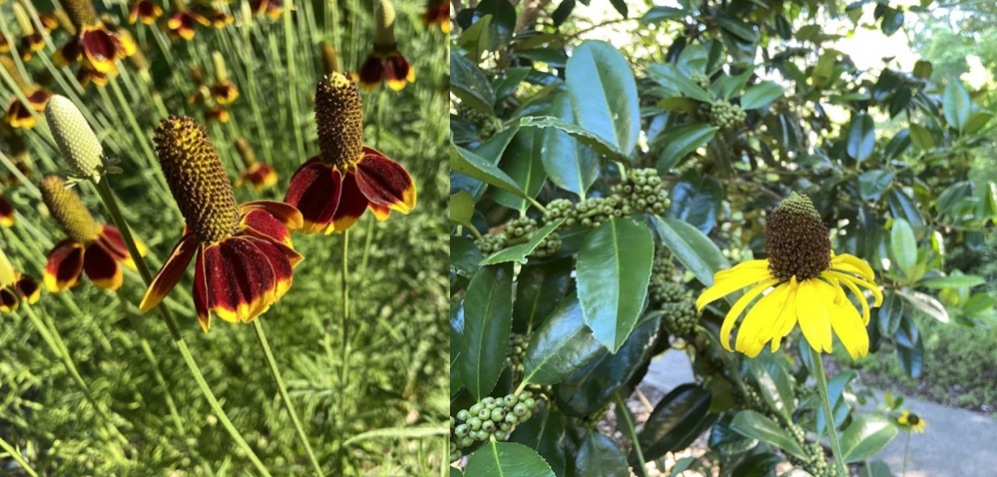
I know, right off the bat these two can be told apart pretty easily by their flower color. But overall, the flower shape is pretty reminiscent of one another. The central cone of both flowers is elongated and makes it look like it hopped right out of a whimsical children’s book. They both also hold their petals low. The Mexican hat plant, pictured to the left, is a bit more narrow in its central cone, while Rudbeckia maxima (sorry, but saying “large coneflower” in this instance makes things a bit confusing!) is more wide.
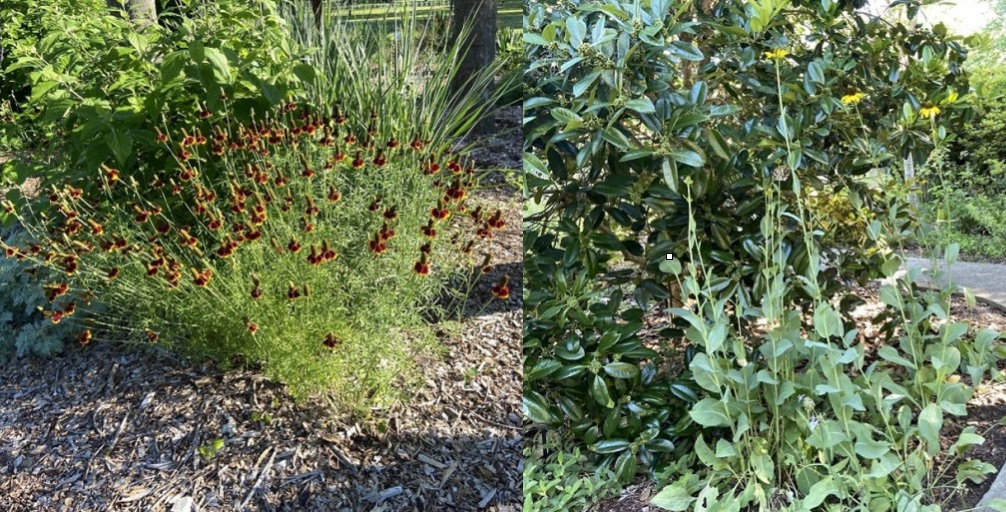
Another way to reinforce which is which is to take a look at the habits, or overall form of the plant. The Mexican hat plant, on the left is loaded with flowers, is a bit shorter, and has wispy foliage, while Rudbeckia maxima has less flowers, is taller, and has more coarse foliage.
Holly Olive (Osmanthus heterophyllus)/Chinese Holly (Ilex cornuta)
You could probably tell by the names of these next two plants what we have coming up. One of these plants resembles a holly, while the other is indeed one!
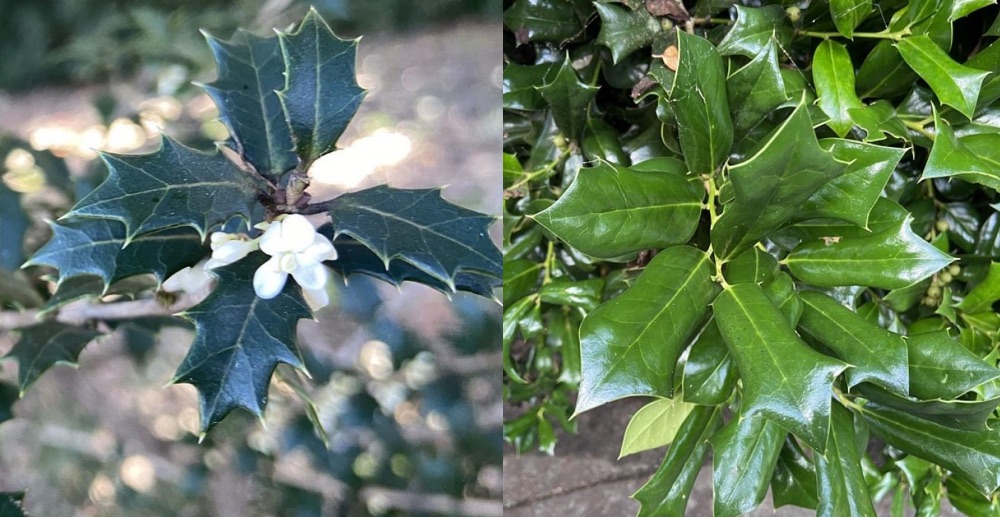
When I first saw the plant on the left flowering, I remember commenting how pretty it was for a holly. I’m not a huge holly lover, but I found myself quite enjoying this one. As it turns out, my position as “not a huge holly lover” stayed intact, as I was told that this plant was actually an Osmanthus, and not a holly! The plant on the right, however, is truly a holly, and is a Chinese holly. Let me explain the error of my ways and how you can keep some holly and holly look-alikes straight.
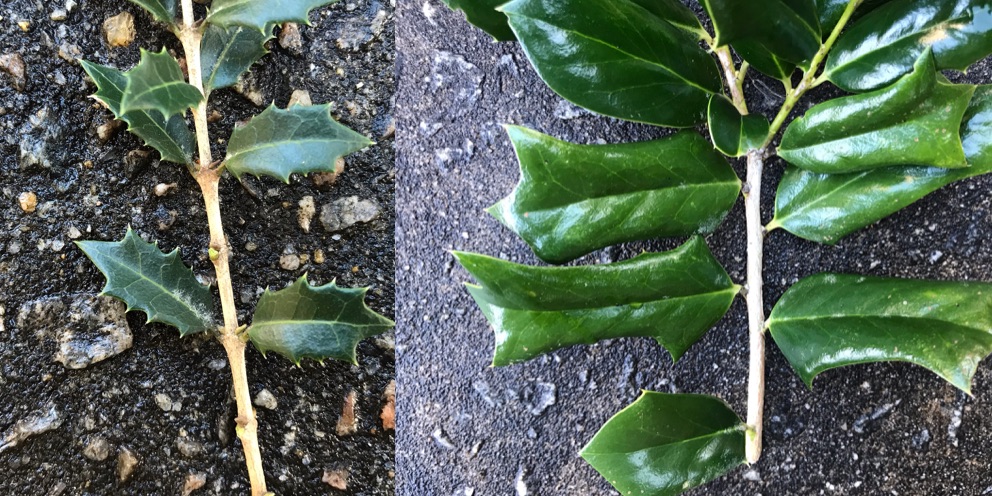
After taking a look at how the leaves attached, it became clear. The leaves indeed attached right next to each other (opposite) and not on alternating spots on the stem (alternate). As you can see above, the holly olive leaves (left) demonstrate opposite leaf attachment, while the Chinese holly leaves (right) demonstrate alternate leaf attachment. I think a true visual picture better helps to reinforce this idea over me trying (likely in vain) to [finger]paint a mentally descriptive image!
With how diverse plants are, it may be surprising how similar some can look! If you wind up doing some plant sleuthing of your own, make sure you keep in mind some of the imposters we looked at today. As we’ve seen here, plants may share very similar characteristics in their leaves or flowers, but usually we have ways to rule out the look-alikes and put an accurate name to a face.
See you in the gardens!
Hours
Hours: Monday & Tuesday 9:30 AM - 5:00 PM
Wednesday - Sunday 4:00 PM - 9:00 PM
For daytime admission, gates close at 4:30 PM. For their safety and the safety of our animal collection, pets are not allowed, nor can they be left in vehicles inside Brookgreen. Service animals that have received special training to assist disabled persons are welcome.
Tickets
Daily General Admission Tickets for 7 consecutive days
Children 3 and under: Free
Children 4-12: $14
Adults 13-64: $25
Seniors 65 & Over: $23
Location
1931 Brookgreen Drive
Murrells Inlet, SC 29576
Off US Highway 17 Bypass, between Murrells Inlet and Pawleys Island on South Carolina's Hammock Coast
843-235-6000
GOOGLE DIRECTIONS